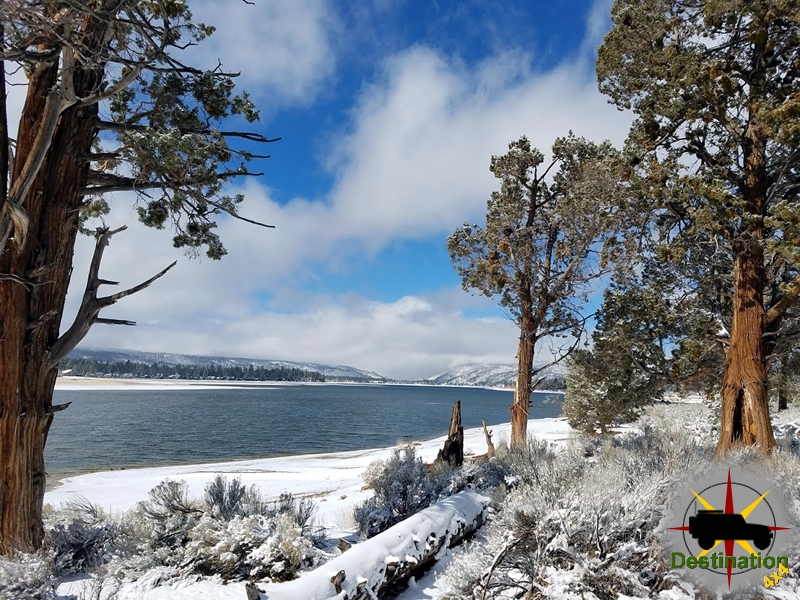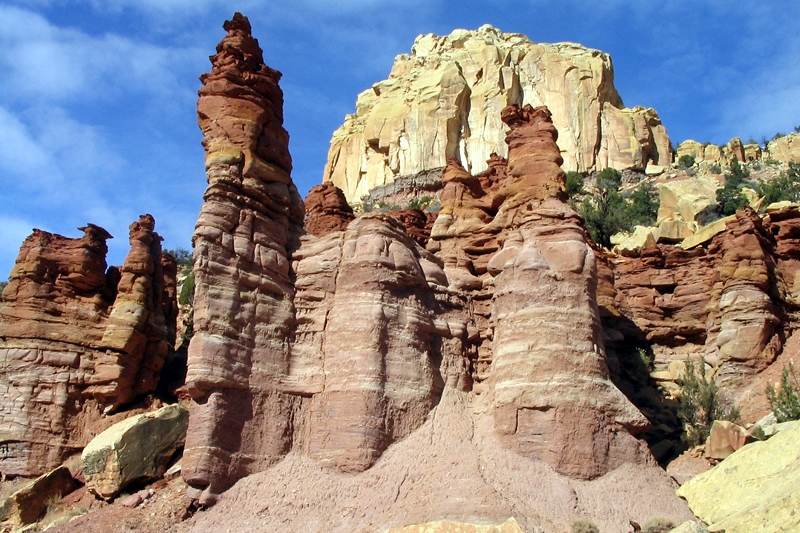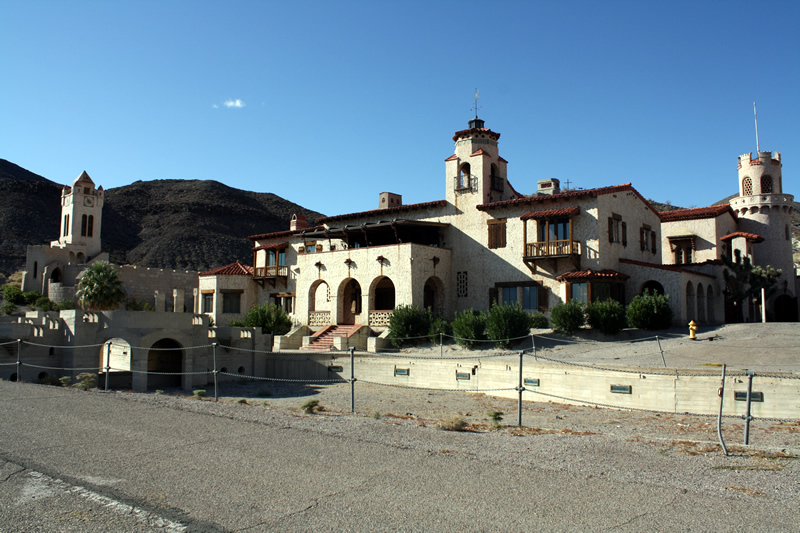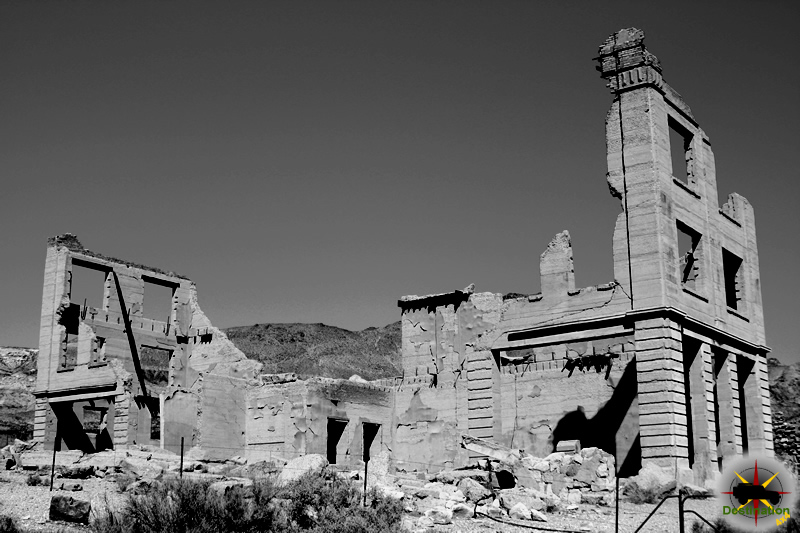
Goodsprings Nevada State Historic Marker #102
Goodsprings NSHM 20 is Nevada State Historical Marker number one hundred and two and is located in Clark County, Nevada.
Goodsprings, Nevada, nestled in the picturesque foothills of the Spring Mountains, exudes the charm of a quaint desert town rich in history and rugged beauty. Its rustic buildings, some dating back to the late 19th century, evoke a sense of nostalgia, while its surrounding desert landscape offers breathtaking vistas and opportunities for outdoor adventures. Once a thriving mining community, Goodsprings retains its old-west character with saloons and historic landmarks like the Pioneer Saloon, known for its bullet-riddled walls and tales of Wild West lore. Today, visitors can explore the town’s heritage through its museums, enjoy hiking and off-roading in the nearby wilderness, or simply savor the tranquility of this hidden gem in the Nevada desert.
Nevada State Historical Markers identify significant places of interest in Nevada’s history. The Nevada State Legislature started the program in 1967 to bring the state’s heritage to the public’s attention with on-site markers. Budget cuts to the program caused the program to become dormant in 2009. Many of the markers are lost of damaged.
Nevada State Historic Marker Text
Ore deposits readily recognized in the faulted and folded limestone deposits of this district remained unworked until 1856, when the Mormons developed a single lead mine at Potosi–probably the oldest lode mine in Nevada.
Named for cattleman Joseph Good, the open springs area was developed into the mining-ranching community of Goodsprings by A.G. Campbell.
With completion of the Los Angeles-Salt Lake Railroad in 1905 and the narrow-gauge Yellow Pine Railroad from Jean to Goodsprings in 1911, transportation costs of the oxidized zinc minerals were reduced. The peak year of operations was reached in 1916, and Goodsprings then had 800 residents.
This district, with the greatest variety of valuable minerals in Nevada, produced a total of $25 million primarily in lead and zinc, with lesser amounts of gold, silver, copper, molybdenum, vanadium, nickel, cobalt, platinum, palladium and uranium.
Nevada Historic Marker #102
Goodsprings Map
” width=”100%” height=”600″ file_list=”https://www.destination4x4.com/wp-content/uploads/NSHM-102-Goodsprings.kml” type=”OpenTopoMap” file_color_list=”#000000″ control=”fullscreen,scaleline,mouseposition” file_title=”Goodsprings NSHM Nevada”]
Goodprings NSHM Summary
| ID | 102 |
| Name | Goodsprings Nevada |
| Location | Nye County, Nevada |
| Latitude, Longitude | 35.8323,-115.4345 |
References
Tybo NSHM – Nevada State Historical Marker #172
Tybo NSHM is Nevada State Historical Marker number one hundred seventy two and is located in Nye County, Nevada.
Nevada State Historical Markers identify significant places of interest in Nevada’s history. The Nevada State Legislature started the program in 1967 to bring the state’s heritage to the public’s attention with on-site markers. Budget cuts to the program caused the program to become dormant in 2009. Many of the markers are lost of damaged.
Nevada State Historic Marker Text
Eight miles northwest of this point lies what was formerly one of the leading lead-producing districts in the nation. Producing erratically from ore discovery in 1866 to the present (the last mill closed in 1937), Tybo has managed to achieve an overall creditable record.
Tybo, in its infancy, was known as a peaceful camp, but later refuted that claim when there occurred racial strife between the Irish, Cornish and Central Europeans; later these groups banded together to drive from the town a company of Chinese woodcutters.
The town was not unique in having three residential sections, each with its ethnic group. However, all children went to the same brick school.
Nevada State Historical Marker #172
Nevada State Historic Marker Summary
| ID | 172 |
| Name | Tybo Nevada State Historical Marker |
| Location | Nye County, Nevada |
| Latitude, Longitude | 38.3099,-116.2782 |
Tybo NSHM Map
References
Ione Nevada
Ione NSHM is Nevada State Historical Marker number one hundred fifty nine and is located in the Nye County, Nevada.
Nevada State Historical Markers identify significant places of interest in Nevada’s history. The Nevada State Legislature started the program in 1967 to bring the state’s heritage to the public’s attention with on-site markers. Budget cuts to the program caused the program to become dormant in 2009. Many of the markers are lost of damaged.

Ione Valley had a dense and permanent aboriginal population, dating back about 5,000 years. Unusual property arrangements and agricultural methods were practiced later by the Shoshone and Northern Paiute Indians.
Silver was discovered in 1863, and in 1864 Ione City was named first county seat of newly created Nye County. Over 600 people worked in this prosperous town until Belmont wealth attracted most of the miners in 1865, and the county seat in 1867.
Alternately prosperous and poor, yet never completely deserted, Ione suffered mining depressions, milling difficulties and the loss of miners to richer strikes throughout its history.
Nevada State Historical Mark #159
Nevada State Historic Marker Map
Ghost Town Summary
| ID | 159 |
| Name | Ione Nevada State Historical Marker |
| Location | Nye County, Nevada |
| Latitude, Longitude | 38.9496, -117.5852 |
References
Ragtown Nevada
Ragtown Nevada is ghost town and Nevada State Historical Marker number nineteen. The town and Nevada State Historic Marker are located in the Churchill County, Nevada. The town was located about eight miles west of Fallon Nevada. Originally, the town was located near Leeteville, but later is relocated to its historic location. Today, nothing remains of the old settlement.

The site which will become Ragtown started in 1854 as a station along the Humboldt Overland Trail. The station is located on a small ranch and the site is the first watering hole for travelers west of the dry alkali Forty Mile desert. The Forty Mile desert is one of the most notorious sections of the transit and the site of many tragedies. Travelers would rest and recoup from the journey along the northern bank of the Carson River before starting for the Sierra Nevada. The name Ragtown comes from the clothing hung to dry from the women doing their laundry.
During the late 1850’s, small structures are built from willow poles and canvas as temporary shelters for travelers. A summer seasonal population is comprised of traders, gamblers and those of less notable reputation. Samuel Clemmons visited Ragtown in 1861 on his way out west.
A flood in 1862 destroyed all of the structures and disinterred some 200 graves. The site is temporarily abandoned until the Reese River Excitement in 1863 started a renewal. By the late 1860s a post office is established and the small population of farmers worked the area. The location is bypassed with the establishment of the Central Pacific rail service.
Today, nothing remains of Ragtown beyond a historic maker.
Nevada State Historic Marker Text
Ragtown was never a town. Instead, it was the name of a most welcome oasis and gathering point. This mecca on the banks of nearby Carson River received its name from the appearance of pioneer laundry spread on every handy bush around.
The Forty Mile Desert, immediately to the north, was the most dreaded portion of the California Emigrant Trail. Ragtown was the first water stop after the desert. To the thirst- crazed emigrants and their animals, no sight was more welcome than the trees lining the Carson River.
Accounts tell of the moment when the animals first picked up the scent of water—the lifted head, the quickened pace, and finally the mad, frenzied dash to the water’s edge. Then, emigrants rested for the arduous crossing of the Sierra Nevada that lay ahead.
In 1854, Asa Kenyon located a trading post near Ragtown, offering goods and supplies to travelers during the 1850s and 1860s. Ragtown was one of the most important sites on the Carson branch of the California trail.
HISTORICAL MARKER No. 19
STATE HISTORIC PRESERVATION OFFICEC
HURCHILL COUNTY MUSEUM COMMITTEE
Nevada State Historical Markers identify significant places of interest in Nevada’s history. The Nevada State Legislature started the program in 1967 to bring the state’s heritage to the public’s attention with on-site markers. Budget cuts to the program caused the program to become dormant in 2009. Many of the markers are lost of damaged.
Historic Photos

Pony Express
Townley identifies Ragtown as a station between Old River and Desert Wells. Like other stations on the “Stillwater Dogleg,” Ragtown probably functioned briefly as a Pony Express station in the summer and fall of 1861 and as an Overland Mail Company stage stop from 1861 to 1868. L. Kenyon and his family managed station operations at the site for nearly fifty years. The station’s name supposedly came from the common site of freshly washed travelers’ clothing spread out to dry on surrounding bushes.
Ragtown Summary
| Name | Ragtown, Nevada |
| Location | Churchill County, Nevada |
| GNIS | |
| Population | Transitory, Seasonal, 50 |
| Post Office | 186X – |
| Elevation | 4,029 feet |
| Nevada State Historic Marker | 19 |
| Latitude, Longitude | 39.5057,-118.9215 |
| NPS Pony Express Station | 160 |
| Next Westbound Station | Desert Wells Station |
| Next Eastbound Station | Nevada Station |
Nevada State Historic Marker Map
References
Old Boundary (Nevada’s Southern Boundary 1861-1867)
Old Boundary (Nevada’s Southern Boundary 1861-1867) is Nevada State Historical Marker number fifty seven located in Lincoln county, Nevada. The marker is located about 6 miles north of Beaty along highway 95.

In 1867, the Nevada Legislature approved the action of Congress to add that portion of the Territory of Arizona which lay to the south of this line, west of the 114 degree west longitude and the Colorado River, and to the east of the boundary of California. This action, taken on January 18, 1867, gave to the State of Nevada the permanent boundaries as they are today.
Nevada State Historical Markers identify significant places of interest in Nevada’s history. The Nevada State Legislature started the program in 1967 to bring the state’s heritage to the public’s attention with on-site markers. Budget cuts to the program caused the program to become dormant in 2009. Many of the markers are lost of damaged.
Nevada State Historic Marker 57
The 37th degree north latitude is marked at this point as the dividing line between the Territories of Utah and New Mexico under the provisions of the Compromise of 1850 which originally organized the land ceded by Mexico in 1848.
When the Territory of Nevada was carved from western Utah in 1861, this line became the southern boundary of the new territory and continued to serve as such when the Territory and State were enlarged by extensions to the east in 1862 and 1866 respectively.
In 1867, the Nevada Legislature approved the action of Congress to add that portion of the Territory of Arizona which lay to the south of this line, west of the 114 degree west longitude and the Colorado River, and to the east of the boundary of California. This action, taken on January 18, 1867, gave to the State of Nevada the permanent boundaries as they are today.
STATE HISTORICAL MARKER No. 58
STATE HISTORIC PRESERVATION OFFICE
Nevada State Historic Marker 57 Summary
| Nevada State Historic Marker | 57 |
| Name | Old Boundary (Nevada’s Southern Boundary 1861-1867) |
| Location | Lincoln County |
| Latitude, Longitude | 36.9772, -114.9771 |





